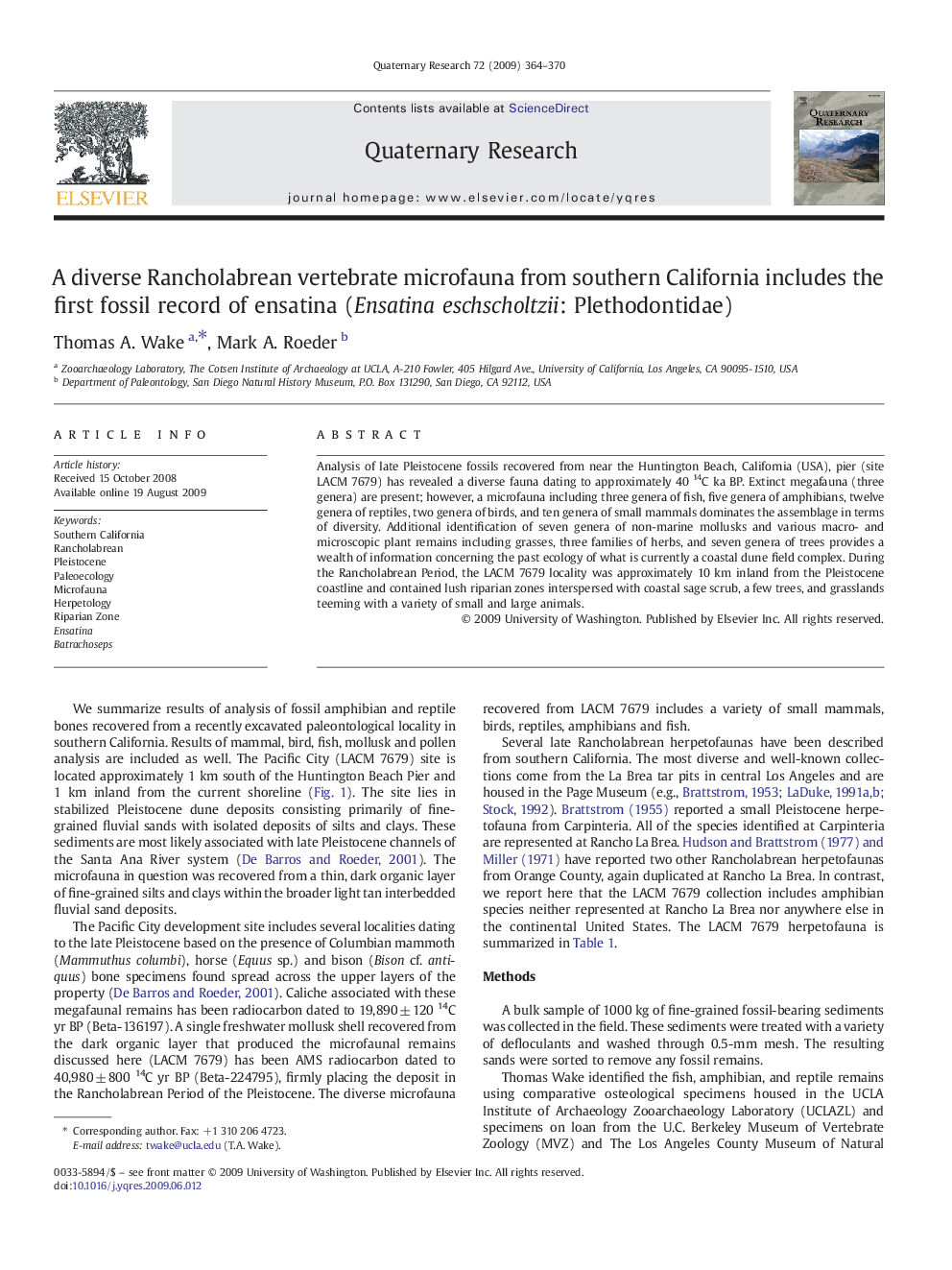| Article ID | Journal | Published Year | Pages | File Type |
|---|---|---|---|---|
| 1045854 | Quaternary Research | 2009 | 7 Pages |
Abstract
Analysis of late Pleistocene fossils recovered from near the Huntington Beach, California (USA), pier (site LACM 7679) has revealed a diverse fauna dating to approximately 40Â 14C ka BP. Extinct megafauna (three genera) are present; however, a microfauna including three genera of fish, five genera of amphibians, twelve genera of reptiles, two genera of birds, and ten genera of small mammals dominates the assemblage in terms of diversity. Additional identification of seven genera of non-marine mollusks and various macro- and microscopic plant remains including grasses, three families of herbs, and seven genera of trees provides a wealth of information concerning the past ecology of what is currently a coastal dune field complex. During the Rancholabrean Period, the LACM 7679 locality was approximately 10Â km inland from the Pleistocene coastline and contained lush riparian zones interspersed with coastal sage scrub, a few trees, and grasslands teeming with a variety of small and large animals.
Related Topics
Physical Sciences and Engineering
Earth and Planetary Sciences
Geology
Authors
Thomas A. Wake, Mark A. Roeder,
